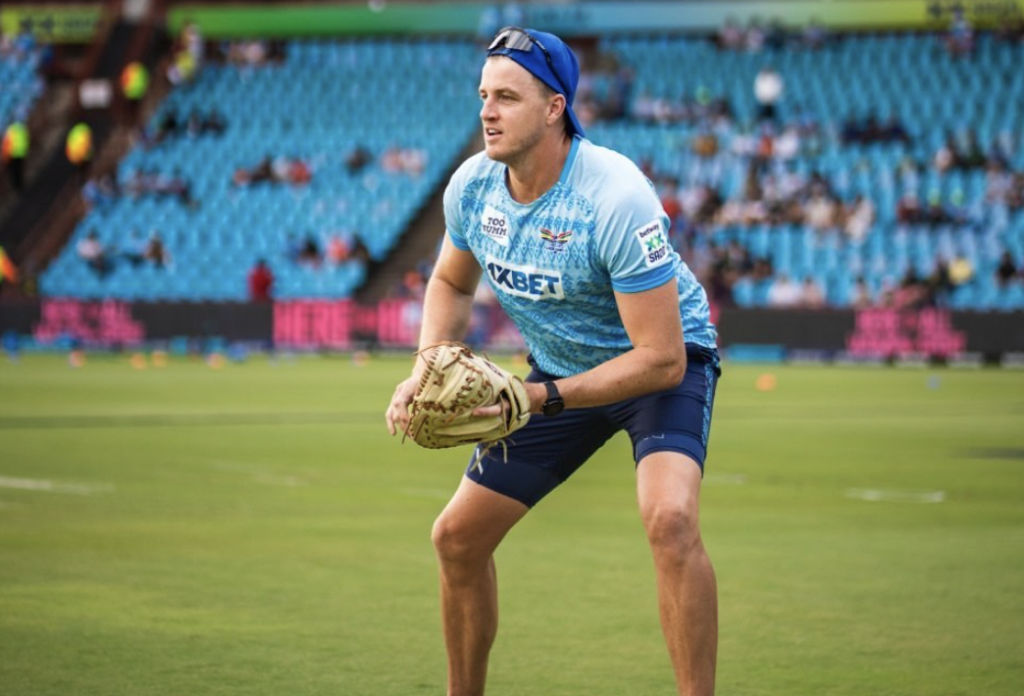
Event – Asia Cup
Venue – Pallekele Stadium
Match – India v Pakistan
As the heavens opened up at the Pallekele Stadium, some spectators got up from their seats to explore the stadium. It was also the right time to make a beeline entry towards the shops near the ground in order to buy refreshments. This writer’s eyes zoomed in on an interesting conversation between Shaheen Afridi, the Pakistan fast bowler, and Morne Morkel, then the team’s bowling coach. The duo seemed to be involved in a discussion over Afridi’s wrist position. Afridi also was looking over his front arm.
In a few minutes’ time, with his catching mitts, Morkel was giving Afridi some bowling practice. The left-arm pace bowler was mainly looking to float the ball, rather than hitting the pitch hard. The idea was to generate some swing. When play resumed, it was evident that Afridi was finding movement.
It is true that there would have been some moisture with all the rain around, as Afridi didn’t just get it to move in the air but also off the deck. But, it was clear that Afridi was quite happy with how the ball was coming out of his hand after the rain break. Subsequently, he went on to dislodge both the fulcrums of the Indian batting unit – Virat Kohli and Rohit Sharma.
A year later, when Morkel was officially named as the bowling coach of the Indian set-up, this bit of memory flashed in the mind. Obviously, he doesn’t have a magic wand that would miraculously transform someone’s abilities, but the brief conflab between Afridi and Morkel indicates that the latter is a good communicator.
Morkel also takes over at a time when India are looking to groom the next lot of pace bowlers, which includes Mayank Yadav, Harshit Rana, Avesh Khan, Prasidh Krishna, Akashdeep, Umran Malik and others. At the highest level, it is more about working on a pacer’s mindset – It could range from defining a bowler’s role to tactical smarts and the general approach.
In an imaginary sense, a young bowler might not be using the crease well or he isn’t providing the finishing touches after pushing the batter back. It could be even related to how a pace bowler is not able to withstand the pressure of being smashed around the park. Morkel has a talented group of pace bowlers to work with and the onus would be on him to pass on the various qualities required to become a fine fast bowler.
Morkel’s appointment also comes in the backdrop of an Australian tour on the horizon. Morkel has been on a couple of Test tours to Australia, with South Africa winning both those rubbers. Although he didn’t exactly have excellent numbers in Australia, his experience of playing in those climes would be valuable. Incidentally, Morkel became a permanent resident of Australia in 2020, so he would have noticed from close quarters how the conditions have changed to some extent in Australia since India last played there in 2020-21.
It should also be recalled that during his playing days, Morkel was criticised for bowling a tad too short. In other words, he was beating the bat often but not getting the elusive edge. Somewhere, it could help Morkel in guiding India’s tall quartet – Prasidh, Avesh, Mayank and Harshit, as he has not just seen success but also learnt it the hard way after experiencing failures.
Moreover, Morkel has worked alongside Gautam Gambhir, the current India head coach, at Lucknow Super Giants. He also played under Gambhir’s captaincy at Kolkata Knight Riders. So, the duo have established a good rapport.
When you peel back the various layers of Morkel’s career and his coaching assignments, the head honchos of Indian cricket seem to have made a good choice in naming him as the bowling coach. Only time will tell whether Morkel would make a difference as India enter a crucial transitional phase.



